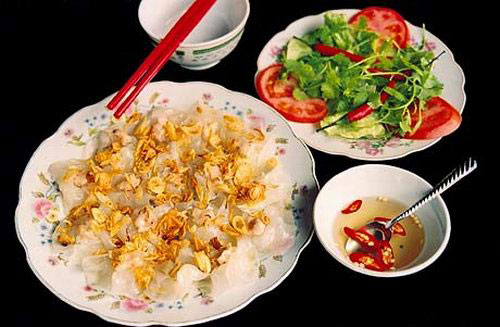As one of the most wildest and beautiful beaches of Vietnam, Ca Na Beach, the “Sleeping Princess” of Ninh Thuan province, is warmly beckoning tourists.

Ca Na beach
On the map of Vietnam tourism as well as the world’s, Ca Na is amongst the impressive names for a picturesque landscape of sea, mountain, forest, and even a Cham culture. It is this combination of natural beauty and cultural value that makes it a tourism heaven for any kind of visitors.
A quick look. Ca Na is fortunate to be granted such a favorable location, which is on the trans-Vietnam railway, right on the 1A Highway, and around 200km east of Ho Chi Minh City. It stretches as far as 10km with blue sky and purely green water. Ca Na is attractive to tourists not only for the mentioned charm, but also the ideally pure and cool weather all the year round. If staying here overnight, you will deeply feel the Ca Na night’s delicate harmony of with moonlight, hissing sea wind, and whistling waves. Do come and feel it yourself, no regret at all you would have!
Why is it named so? A legend tells that in the past, under Nguyen dynasty, there were a King and a queen who went swimming here, and found it a rare magnificent charm in the region. They then named it “Nang Tien Ca” (translated as “fairy fish”). Ca Na is the name in Cham language, and exists until these days. For the other beautiful way of calling, “Sleeping Princess”, the reason is very simple; the beach still remains wild, even most pristine as compared to others in Vietnam, and more importantly, it does look graceful and fascinating!
Deep attraction to tourists
Picturesque landscape. One side is rock, one side is the beach! On your one side is a very vast sea that normal eyes could not see through. On the other side is the mighty Truong Son mountain range with side by side upright rocky limestone mounts. Getting deep into the area is tropical jungles, where live so many kinds of rare and precious animals... Actually, it must say, Ca Na is a harmonious sonata of nature!
The rocky mountains turn up imposingly. In spring, apricot blossoms in the mountain, making up a rich source of inspiration for artists. Thousands of islets with different shapes gather together create vivid images just nearby the road.

Ca Na corals
The beach is excellent! It curls like a sickle, white sand and high salty degree. Salt in Ca Na beach is considered the best one in Southeast Asia. The beach slopes gently to the sea with the depth of one to two meters. The weather is sunny and warm all the year round. Climbing up the mountains, and swimming in the crystal – clear water in this place are very enjoyable. Also, you can take photos of rocks protruding into the sea.
Looking to the sea farthest, you may see a small islet turning up, which is called “Hon Lao”. This is a popular spot of Ca Na for numerous species of sea birds, Tien Well, and the famous Thach Grotto with 7 skulls, attracting a huge number of adventurous tourists.
Popular Sea food. Apart from Ca Na’s most famous specialties, such as salt and Nhi fish sauce, tourists are offered a great chance to taste delicious seafood, say, shrimp, crab, shellfish, etc. There are a number of beautiful tiny things here to buy for gifts, among which the most popular one preferred by tourists is the sea coral.
Besides, tourist can visit the Cham’s special structures and traditional villages, where a lot of Cham people are living with nearly genuine traditional custom, just in the nearby surroundings. This is the last but actually not least absorptive beauty of this popular beach of Ninh Thuan.










.jpg)



